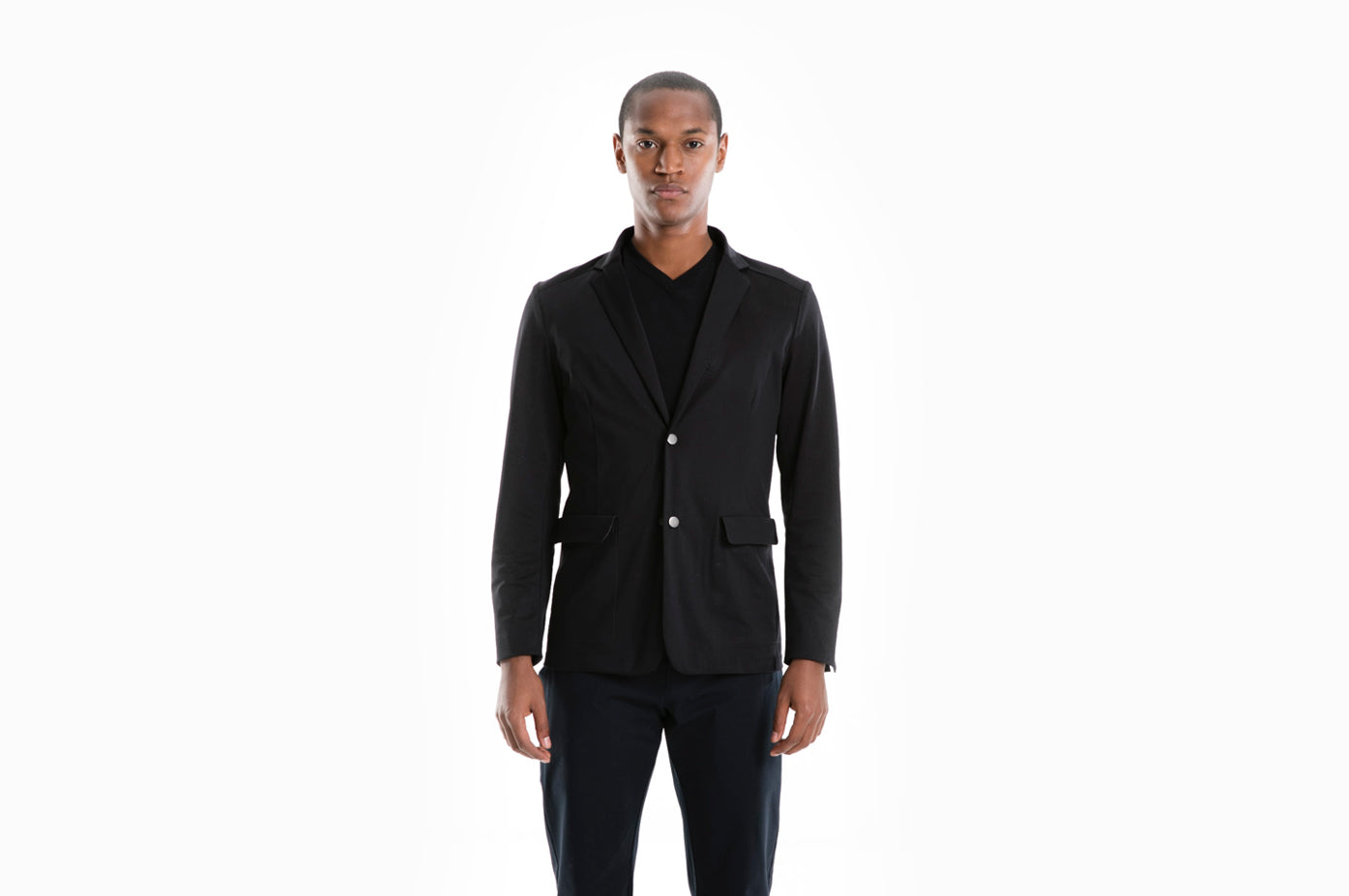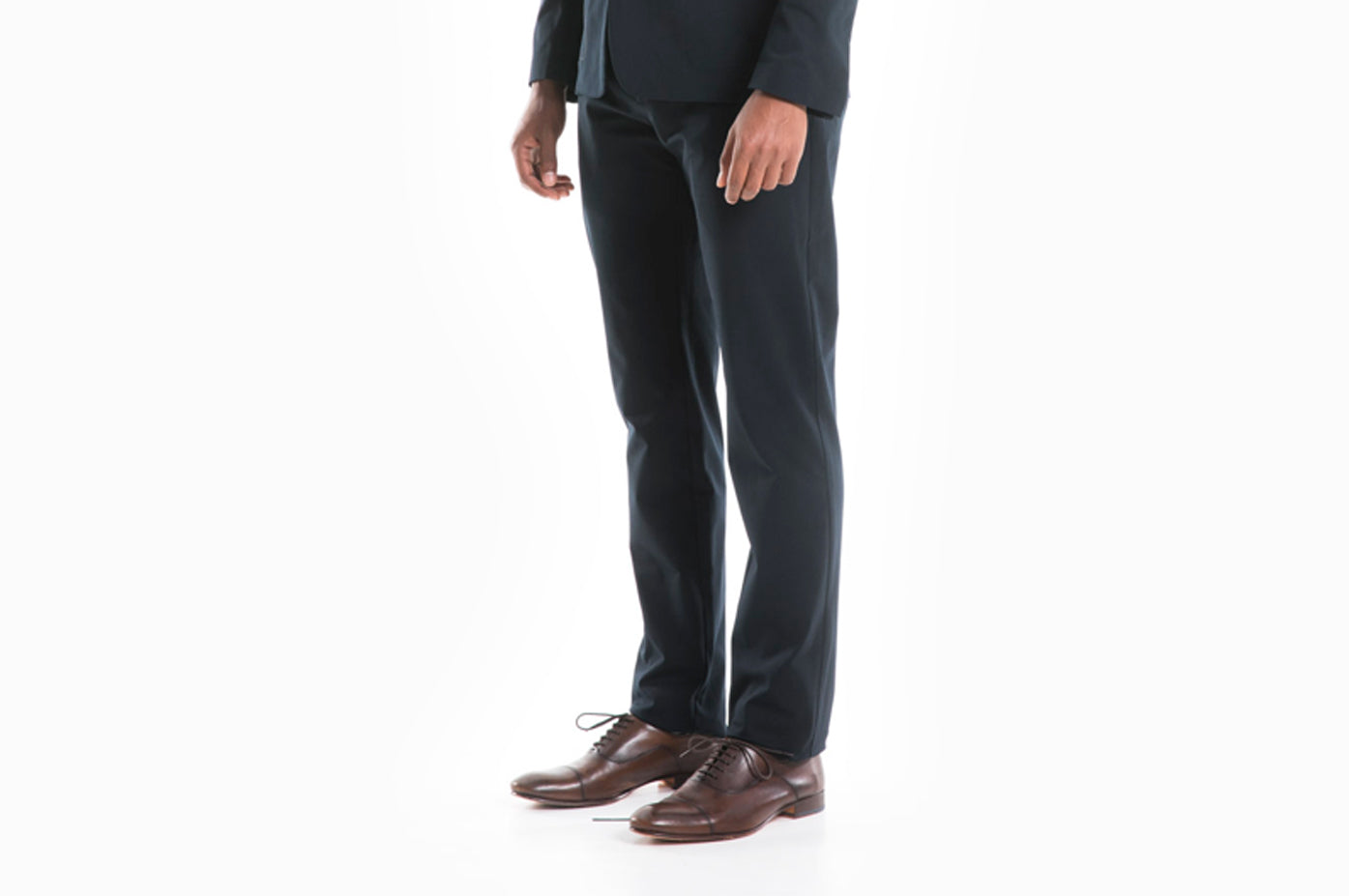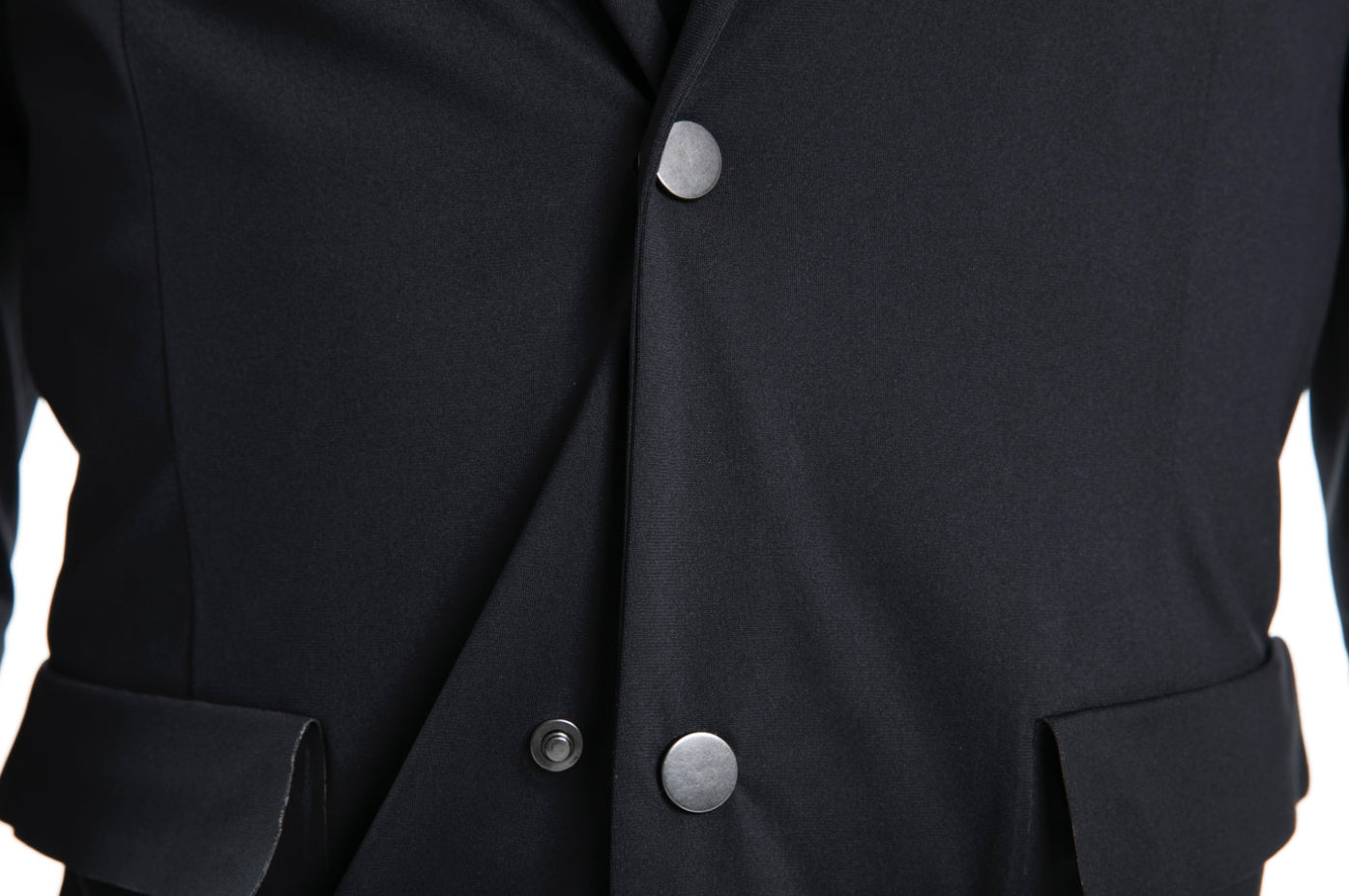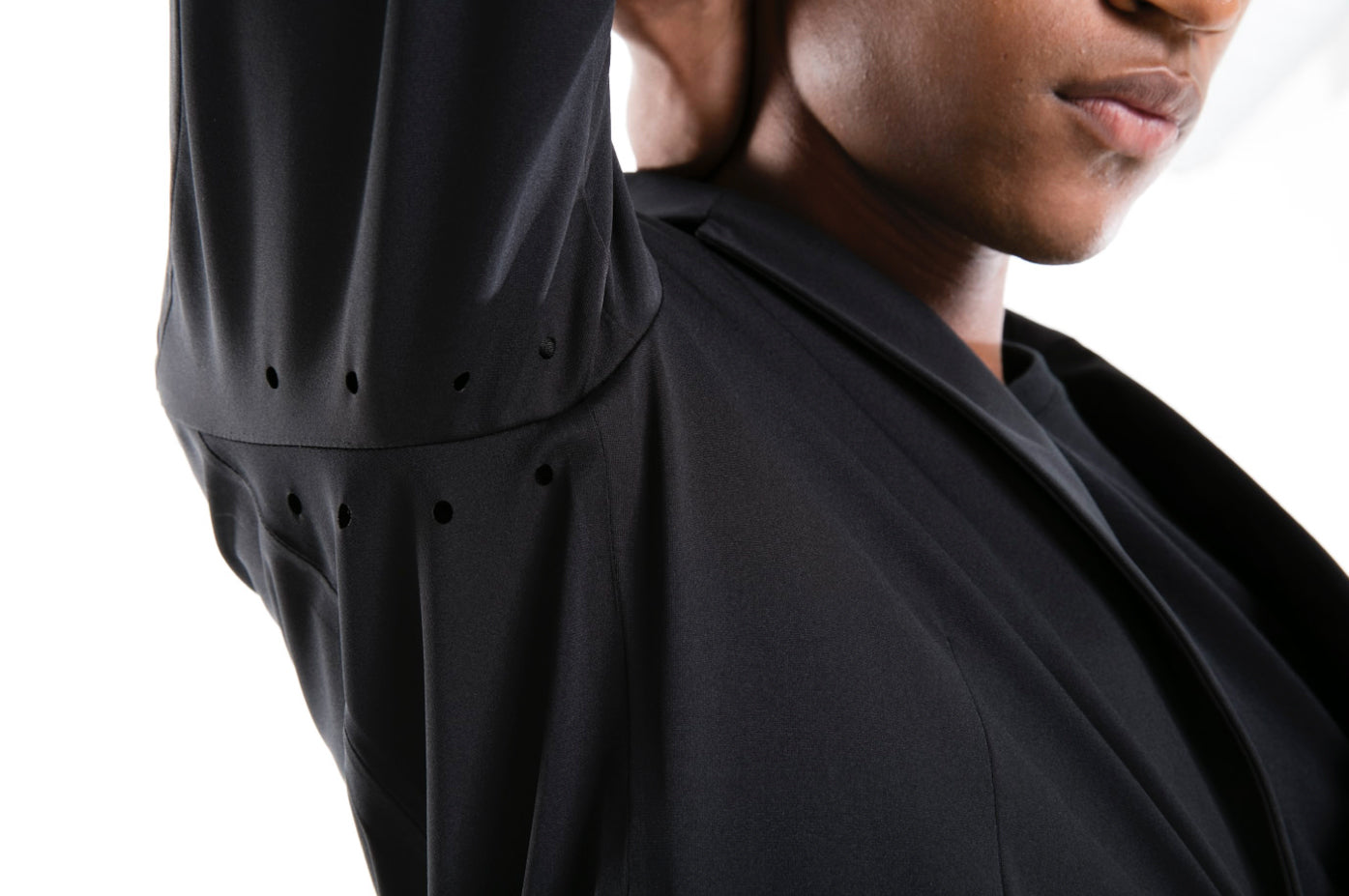row

With a fabric as versatile as the warp knit we’d decided to use for Aviator 2 jacket and pants, it was crucial that the garments’ details pushed this versatility even further – which meant a great deal of trial and error until both suiting separates performed above and beyond anything else out there.
We started with the pants, using our original Aviator Chino design as a jumping-off point. Step one was making bending and sitting as comfortable as possible, so we decided to align a curved yoke above the pant seat, where it sees the most strain. With this yoke came the opportunity to reinvent the back pocket aesthetic: instead of building pocket openings into the pants, we were able to line them up with the seam of the yoke so they’re actually hidden from view for a sleeker, more streamlined look.


We were building out the Gemini Chino around the same time Aviator 2 was under development. And Gemini, of course, was the first of our garments to get the major hardware upgrade with CobraX slide-lock closures. Using these premium closures on the Aviator 2 pant was the obvious move, but it soon became clear that it’d make most sense to use the same slide-lock closures on the blazer, too. They’re far sleeker than a traditional button closure – not to mention more durable – and add that idea of sporty versatility we wanted Aviator 2 to embody.

In our first jacket prototype, we designed the back vent with a zipper closure, which we ultimately decided to nix all together. While our goal is to design future-forward garments, we don’t want to add extra features merely for the sake of challenging tradition. If the features are too bulky and somewhat out of place – as we decided the back vent zipper was – it’s important that we’re honest with ourselves about that and stick to the ultimate goal of creating a smart, clean garment that isn’t unnecessarily complicated.

The first Aviator 2 jacket prototype also included lasercut underarm vents. It seemed like a natural fit, including these perforations in the design, as we’ve had great success with this feature in past garments. But we’d never designed with warped knitting before – and what we soon learned was that the fabric didn’t accommodate for lasercutting very well. Rather than forcing the feature, we decided to abandon it in this jacket, realizing full well that the knit is already inherently breathable and will promote airflow on its own.
Stay Tuned for Part 3 and Tomorrow's Launch
Shop


